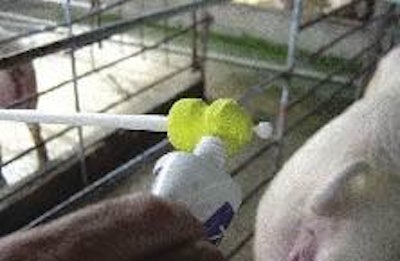
Training of farm personnel in managing the artificial insemination of pigs is an important part of our work. The centre that I direct provides about 80% of all the training on pig AI done in Taiwan. For the last 5 years, we have also performed further studies on boar-stud arrangements and practical insemination techniques.
One of our first experiments underlined the effect of the environment on breeding results. Outside temperatures can be quite high during our hot season, of course. We have been able to demonstrate that, despite the humidity that is also common here, the use of wet-pad cooling combined with forced ventilation for the mating house improves AI performance significantly.
Boar condition has been another aspect emphasised by our tests. While others have shown the risk of AI boars becoming fat, in our experiment it was found that the thin boar produces the lowest quantity of semen and sperm concentration as well as the poorest motility of sperm. Where boars had a low selection index, their semen was significantly better for motility, but with the least volume of ejaculate and the lowest total number of sperm.
Intrauterine insemination
However, the third of the experiments has been the most noted because it investigated the relatively new concept of intrauterine insemination. When we tried this so-called deep AI we obtained a better farrowing rate and significantly more piglets born alive, compared with using a traditional catheter.
It is important to mention that the test used the same semen dose each time, of 3 billion sperm in 30ml. Moreover, it examined intrauterine insemination by more than one catheter type. The accompanying photos show the tubes we differentiated as having either a large or a small head. The outstanding results on conception and litter size came especially from the large-headed version, as Table 1 illustrates.
In addition, inseminating by a normal catheter into the cervix resulted in the fewest piglets born alive, in a comparison both with a common large-head intrauterine tube and with a soft-balloon type (Absolute). As Table 2 shows, the soft-balloon tube also gave the highest farrowing rate.

















